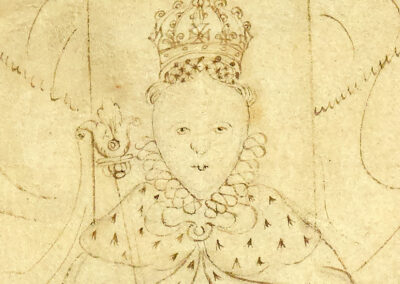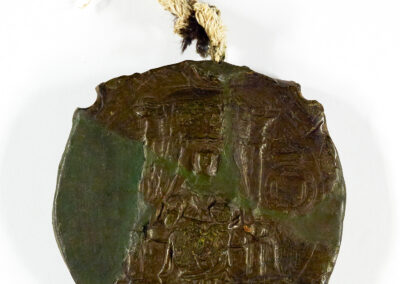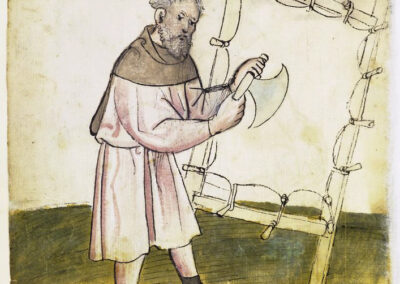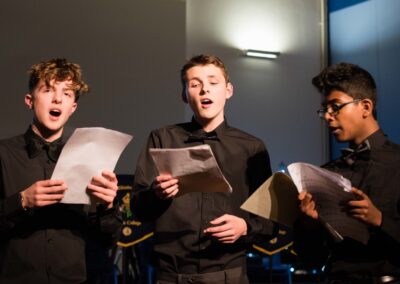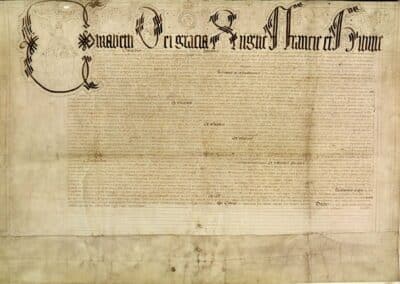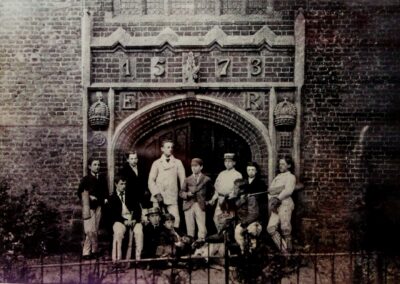Notable Persons from QE’s History
Throughout the history of Queen Elizabeth’s School there are many people who are remembered for their contributions to the school as well as for their exploits in the wider world. This is just a small selection of the many people who have added to the rich tapestry of the school’s history and more will be added over time. We want to allow our students the opportunity to take ownership of their school’s history and further contributions to this page will be added as a result of their research. We currently have some year 8 and year 9 students researching various individuals so please visit the page again soon to see which characters they have met and what they have found out.
As we celebrate our 450th anniversary our initial selection focuses on the individuals that helped found Queen Elizabeth’s.
The First Governors
The school charter established a corporate Governing body of 24 ‘discreet and honest men’ who held ownership of the school’s assets, the power to appoint/dismiss staff and the authority to regulate its affairs. The 24 men who became the first governors of the school are listed in the charter as,
| Henry Knolles | Arthur Cocket | Humphrey Fairfaxe | William Pettit |
| John Brocket | John Hardinge | John Stacye | John Beakenfield |
| William Dodde | Robert Offley | John Hudson | John Marsh |
| Thomas Tailer | Thomas Russel | Robert Johnson | William Rolfe |
| Thomas Tailer | John Evans | Edward Underne | William Nicoll |
| William Lee | Christopher Edwards | William Wager | Robert Sharpe |
Henry Knolles

Portrait of Lettice Knolles, (1543-1634), sister to Henry Knolles and wife to Robert Dudley. Attributed to George Gower, Public domain, via Wikimedia Commons {{PD-US}
One of the first governors of Queen Elizabeth’s School, Henry Knolles was cousin to the Queen and served as her personal attendant. At the time of the school’s foundation, he was MP for Oxfordshire but likely had links to Barnet through his wife who was buried at Hadley in 1606. As well as his role as courtier Henry Knolles also raided the Spanish coast as a privateer, an occupation the Queen would have approved of in her pursuit of empire.
Henry was also very closely connected to Robert Dudley, the Queen’s favourite, and it is their friendship that most likely encouraged Robert Dudley to petition the Queen for a free school in Barnet. Five years after the school’s foundation Robert Dudley was married to Henry Knolles’ sister Lettice and so the two men became related by marriage.
Reverend Edward Underne

Image of a boy standing outside the entrance to Tudor Hall, built through funds raised by Rev. Edward Underne
One of the first governors of Queen Elizabeth’s School, Edward Underne was Rector of the Parish of Chipping Barnet from 1568 and, along with Henry Knolles, he was very active in promoting the establishment of a school in High Barnet. Following the granting of the charter he was instrumental in making real the vision of a new school and is generally credited with raising the funds required to build the school. He persuaded the Corporation of London to allow church collections for the purposes of building the new school and it was with these funds that Tudor Hall was built.
One of the school’s six houses is named after Edward Underne.
Robert Dudley, 1st Earl of Leicester

Robert Dudley, 1st Earl of Leicester is well known for his relationship with Queen Elizabeth I. He and Queen Elizabeth I had known each other since childhood and maintained a close friendship throughout their lifetime. On her accession in November 1558, Elizabeth appointed Robert Dudley as Master of the Horse and in 1562 he became a member of her privy counsel. There has been much speculation about the relationship between the Queen and her ‘favourite’. However, whatever the truth of their relationship, Robert Dudley had the ear of the Queen and was well placed to petition the Queen on behalf of his future brother-in-law, Henry Knolles, for a free school in High Barnet.
The school charter states that it is granted ‘at the humble request of our well beloved cousin and Counsellor Robert Earl of Leicester, Knight of the Most Noble Order of the Garter, Master of our Horse, in behalf of our faithful and liege subjects the inhabitants of our Town of Barnet…’
Elizabeth I

Elizabeth I was Queen of England and Ireland from 17th November 1558 to 24th March 1603. At the time of her accession to the throne religious conflict raged in Europe and threatened within England. Following the religious persecutions of her sister and predecessor, Mary Tudor, Elizabeth strove for peace. Her ‘Settlement of Religion’ introduced tolerance and compromise that enabled Catholics and Protestants in England to live in peace and a period of relative prosperity for the country began. Elizabethan officials established 136 new grammar schools as part of a strategy to use education to help facilitate England’s relatively peaceful transition from Catholicism to Protestantism. At the behest of Robert Dudley, Earl of Leicester, Queen Elizabeth founded our school as one of these grammar schools.
